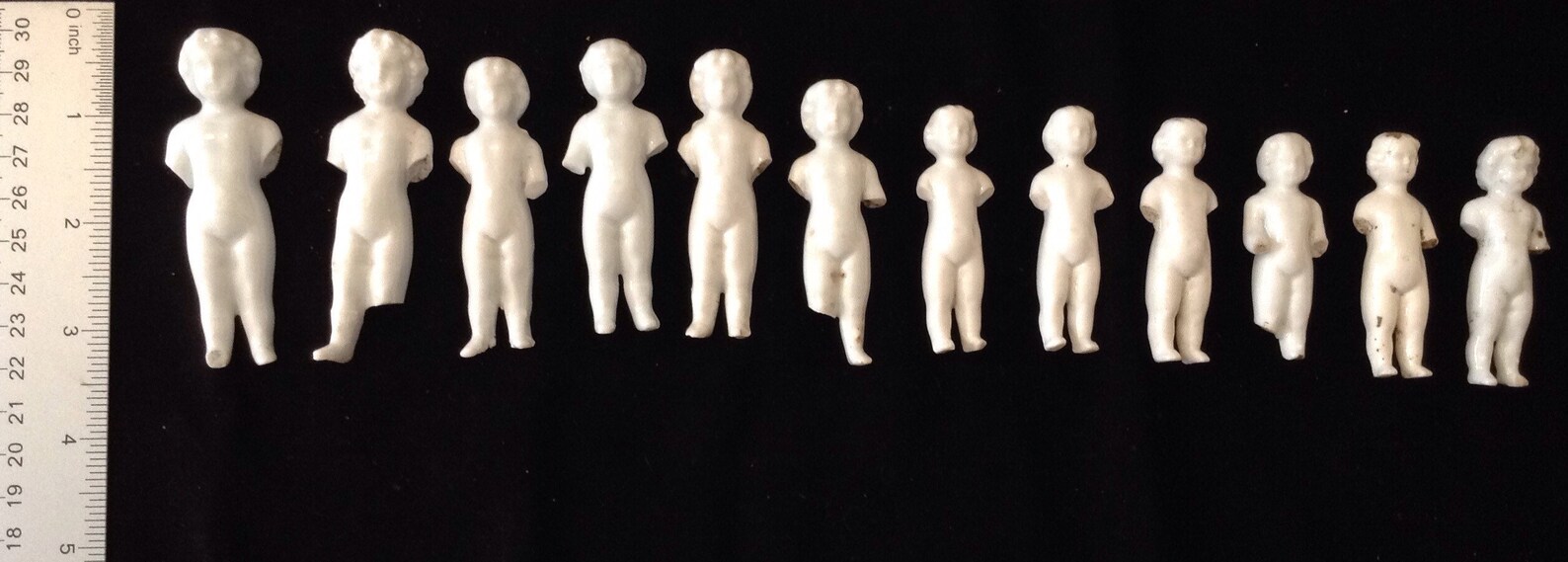Table Of Content

If the doll has a known history, it may be more desirable to collectors. Well, I’m not a ghost expert that’s for sure, but my guess would be no! If you look at their history, these dolls were thought to bring good luck.

Be the first to know about new products, events, and special offers
Theatre of the Year: 2023 - Prospect Magazine
Theatre of the Year: 2023.
Posted: Tue, 26 Dec 2023 08:00:00 GMT [source]
The condition of a Frozen Charlotte doll plays a crucial role in determining its value. Collectors prefer dolls that are in excellent condition with minimal damage, such as chips, cracks, or paint loss. Or course, given that they are largely excavated finds, many are just torsos, or heads, or even just limbs. If you’re buying one or two, or perhaps just a head, the price is achievable. But if you want to create a collection, be prepared to spend $100 at a minimum.
Largest archaeological dig in New Zealand unearths thousands of 19th-century treasures - Stuff
Largest archaeological dig in New Zealand unearths thousands of 19th-century treasures.
Posted: Wed, 21 Sep 2022 07:00:00 GMT [source]
Who Decided to Put Sauerkraut in Chocolate Cake?
Further, the theme holds that Victorian children recognized the symbolism inherent in these small, corpse-like dolls and used them as playthings, sometimes even placing them in tiny coffins. In fact, we’re told that the motif of this particular frozen woman was so pervasive in the 19th century that our counterparts named a dessert after her and baked representations of her into cakes. In the United States, the term Frozen Charlotte came to be applied to these china dolls since they were “frozen” — that is, they didn’t have moving parts like other dolls. This event was reported in a newspaper and supposedly occurred Dec. 31, 1839. If interested, you may hear the song or read the lyrics on the University of Maine website.
The Real Story Behind George Washington's Dentures
Additional charges and exclusions may apply for rush shipping, shipping outside of the US or Canada, and shipping large items. Offer not valid at Indigo, or Chapters™ retail locations or websites. No refunds or adjustments on previous purchases or orders in progress that have not yet shipped. These little dolls can be anywhere from less than an inch up to 18 inches tall, and now turn up on beaches as a highly-sought-after find.
Learn more about beach-found toys and games
We’re a dash of every different language and a sprinkle of the world’s cultures. With the assistance of Center staff, the intern will prepare one or more archaeological collections for curation. During the course of the internship, the intern will learn to identify artifacts and ecofacts common to the San Diego region, including lithics, ceramics, historical objects, and faunal, botanical, and mineral specimens. Center staff will instruct the intern on archaeological laboratory procedures such as basic artifact analysis, manual and computer cataloguing, storage requirements, and preventative conservation. At a village just sixteen miles off, There’s a merry ball tonight, Although the air is freezing cold, Her heart is warm and light. And there she watched with an anxious look, ’Til a well-known voice she heard, And driving up to the cottage door, Young Charles in his sleigh appeared.

Like Frozen Charlottes, Frozen Charlies are naked and don't move. Charlies, however, are usually bigger than Charlottes and can measure up to 16 inches high. Many of the earlier Charlottes and Charlies are chubby-looking, molded in one solid piece, with arms extended as holding a steering wheel.
The smallest dolls were sometimes used as charms in Christmas puddings. Occasionally, versions are seen with a glazed china front and an unglazed stoneware back. This enabled the doll to float on its back when placed in a bath.
The doll’s origins—as a German bath-time novelty, meant to float in a tub—were innocent, but its arrival in the United States, in the mid 1800s, coincided with the popularity of a morbid song. The story goes that Maine writer Seba Smith stumbled upon a newspaper story that recounted how a young woman froze to death in her carriage on the way to a ball. Hit with inspiration, Smith, who is also known as the first to record the word scrumptious, scribbled a poem on the theme. Published in 1843, A Corpse Going to a Ball described how on a frosty night, a young lady named Charlotte refused to wear a blanket over her fine clothes.
Frozen Charlotte: A Macabre Folktale and a Popular Doll
Moreover, no one writing today about Frozen Charlottes has provided contemporaneous evidence that 19th- and early 20th-century Americans ever considered these small dolls as corpses or the embodiments of a vain young woman who froze on her way to a ball. Newspaper advertisements and writings of the period demonstrate that Americans at least knew these small rigid dolls as “penny dolls,” but toy sellers never seem to have advertised these as “Charlotte” dolls. In fact, nothing in 19th- and early 20th-century publications supports the belief that Americans ever made a connection between these figures and Charlotte [see Note 3 for databases searched].
Larger examples were often used in the manner of a traditional doll, as a plaything. Some were even designed to be brought into the bath with a child as they could float on their backs and would not be damaged by water. Smaller sizes were commonly inserted into cakes or puddings as charms, in much the same fashion as a Mardi Gras king cake which traditionally has a baby figurine hidden inside; to find it afforded the discoverer promises of future prosperity. Although we have evidence that 19th-century Americans (and others) sometimes placed penny dolls (and other items) into cakes, there’s no evidence that they ever considered these objects as symbols of frozen women. Many people find porcelain dolls, in particular, to be eerie or creepy. Despite their treasured status amongst doll collectors, the stiff but uncannily human features of these dolls are often likened to corpses.
However, if you find such a doll dressed in homemade clothes, examine its body underneath the clothes which can, and often do, disguise a broken or damaged doll. These can be purchased inexpensively, but perfect examples cost much more, depending on features, size and type. Then, there are tiny Frozen Charlotte bathtub dolls sitting in a tub. Some have long hair flowing to their feet; others wear gilt boots, or shoes and socks molded on. Aside from Frozen Charlottes, which were three-quarters of an inch and larger, there were Frozen Charlies, representing Charlotte's beau.
The eerie tale of a woman perishing on a long sleigh ride inspired Maine poet Seba Smith to write a poem called "A Corpse Going to a Ball." One time highly sought after by young girls to play with in the bath or bake into a cake, these antiques are now sought after by collectors today. It’s commonly accepted that these dolls were didactic tools, physical representations of the consequences of parental disobedience. It’s widely believed that Victorian children were well-aware of the origin story of these dolls and played with them nonetheless. After all, many aspects of Victorian culture are openly macabre and death-obsessed, so this grisly historical narrative isn’t entirely outlandish. We all love those stories but here is where we must use discretion and whatever knowledge our study has developed.
When they arrived, her more-bundled-up beau found her frozen to death in the sleigh. The story says Charlie died of a broken heart soon afterward, and they were buried together in a single tomb. These tiny, pale, porcelain nightmares were pottery dolls manufactured in Germany in 1850, and intended for children to play with during bath time.

No comments:
Post a Comment